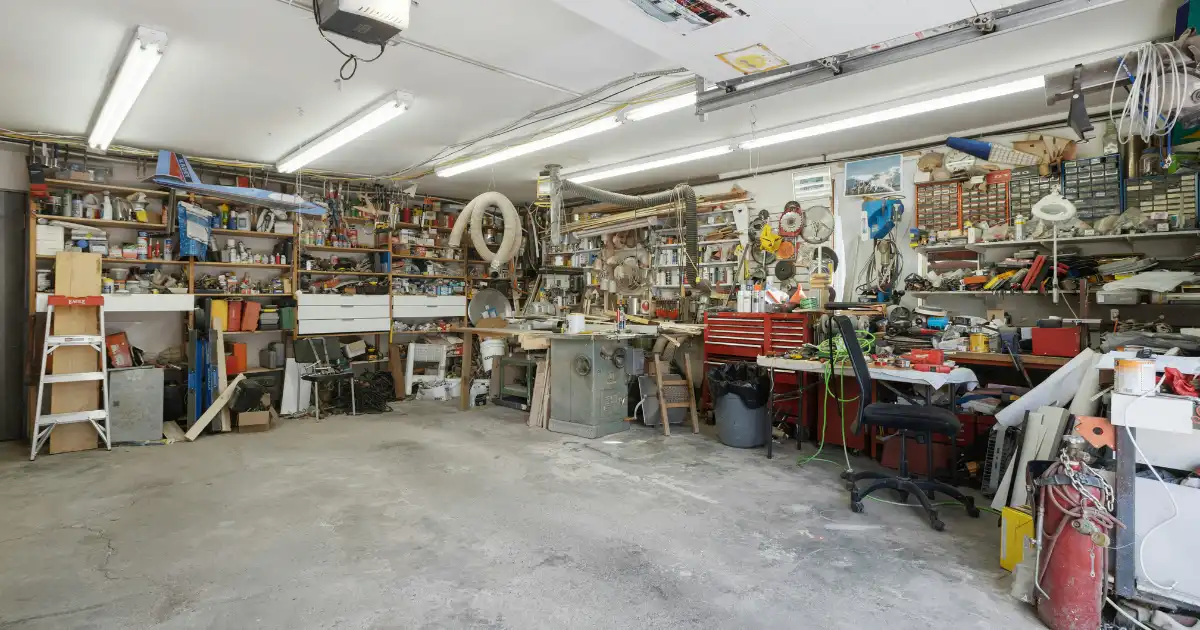Every hockey player dreams of improving their game, but not everyone has access to ice time or high-end training facilities. The solution? Transform your garage into a pro-style hockey lab with these DIY Home Training Hacks! With a few budget-friendly tools and some creativity, you can build an elite-level training space right at home. Whether you’re working on your shot, puck handling, or overall conditioning, this guide will help you set up the ultimate home training zone.
Step 1: Clear the Space & Create a Training Layout
Before bringing in any equipment, start by clearing out enough room for movement. You’ll need a space at least 8×10 feet to practice stickhandling and passing, but the more space you have, the better. Mark off areas for shooting, agility drills, and stickhandling exercises.
Key Considerations:
• Smooth Surface: If your garage floor is rough, invest in shooting pads, synthetic ice tiles, or even large plastic sheets to mimic ice conditions.
• Wall Protection: If you plan on practicing shots, use plywood, foam boards, or netting to prevent damage.
• Lighting: Bright LED lights will help simulate rink conditions and improve visibility during training sessions.
Step 2: Build an Elite Shooting Lane
Shooting is one of the most crucial skills in hockey, and a garage provides the perfect space to work on accuracy and power.
Essential Items:
• Shooting Pad: A high-quality shooting pad allows for smooth puck movement and protects your stick blade.
• Hockey Net: Invest in a regulation-sized net or a smaller target net for precision training.
• Targets & Rebounders: Add foam targets, weighted pucks, and a rebounder to simulate real-game situations.
Drills to Try:
• Top-Corner Challenge: Tape off the top corners of the net and aim for those spots 10 times in a row.
• One-Timers: Use a passer rebounder to practice quick-release shots.
• Rapid Fire: Take 20 shots in under a minute, alternating forehand and backhand.
Step 3: Master Stickhandling with DIY Tools
Stickhandling is a skill that can be developed anywhere, and your garage is the perfect place to refine those silky mitts.
DIY Stickhandling Tools:
• PVC Pipe Obstacles: Create a stickhandling course with PVC pipes or cones to improve puck control.
• Weighted Pucks: Use heavier pucks to build wrist strength and enhance feel when switching back to regular pucks.
• Tennis Balls or Golf Balls: Train with smaller objects to improve hand-eye coordination.
Stickhandling Drills:
• Figure 8s: Weave through two cones while keeping your head up.
• Quick Hands Challenge: Tap a ball side to side as fast as possible for 30 seconds.
• Toe-Drag Perfection: Use a homemade stickhandling obstacle to practice toe-drags and dekes.
Step 4: Enhance Passing & Reactions
Passing is just as important as shooting, and setting up a rebound system will help improve your accuracy and reaction speed.
Affordable Passing Aids:
• Rebound Boards: Use a bungee cord and a wooden board to create a DIY passing trainer.
• Target Zones: Mark target areas on a wall to practice saucer passes and bank passes.
Drills to Improve Passing:
• Wall Rebounds: Pass the puck off the wall and receive it cleanly on your blade.
• One-Touch Passing: Use a rebounder to practice quick-release passing.
• Blind Pass Accuracy: Pass without looking and hit a designated target.
Step 5: Boost Strength & Agility with Dryland Training
Hockey is a physically demanding sport, so off-ice conditioning is just as crucial as skill development.
Garage-Friendly Exercises:
• Jump Rope: A great way to build foot speed and endurance.
• Cone Drills: Improve agility with quick cuts and directional changes.
• Resistance Bands: Strengthen key muscles used in skating and shooting.
• Core Work: Planks, Russian twists, and medicine ball throws help with balance and shot power.
Step 6: Track Progress & Stay Motivated
Training at home requires discipline, so set goals and track your improvement.
Ways to Stay on Track:
• Keep a Training Journal: Record shooting accuracy, speed, and stickhandling times.
• Use Video Analysis: Record yourself and compare your form to pro players.
• Challenge Yourself: Set weekly goals, like hitting 50 top-corner shots or improving stickhandling speed by 10%.
Final Thoughts: The Home-Ice Advantage
Transforming your garage into a hockey training lab is an investment in your game. With a few budget-friendly tools, consistent training, and a little creativity, you can develop elite-level skills without leaving home. Whether you’re a beginner looking to improve or a competitive player aiming to dominate, your garage can become the ultimate home-ice advantage.
Time to get to work—your hockey future starts now! #TrainHard #HockeyLab #HomeIce

